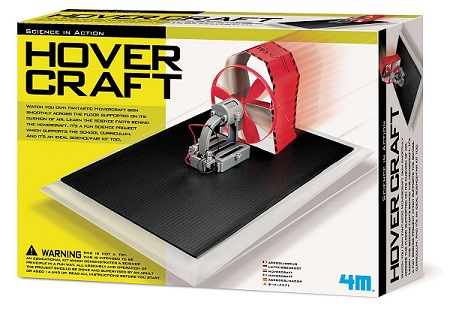About me and why I created this physics website.
Toy Hovercraft

A hovercraft is a fascinating machine, and a toy hovercraft works exactly the same way. A hovercraft uses pressurized air to float above the surface it's traveling on. This surface can be either land, water, mud, or ice which is what makes the hovercraft such a useful vehicle for transport.
Check out a video of a toy hovercraft:
A hovercraft has a hollow chamber underneath. A powerful air pump pumps air into this chamber which causes the air pressure inside the chamber to become greater than the air pressure outside the hovercraft. This difference in pressure causes an upward force to be exerted on the underside of the hovercraft, causing it to lift off the surface it's traveling on.
Propeller engines on the top of the hovercraft push the hovercraft along in the same way that engines on a plane push the plane along the ground.
A hovercraft floats on a cushion of air, which makes it relatively much easier to push than, say, a truck. This is because the cushion of air provides very little resistance to the motion of the hovercraft. But the tires of (say) a truck, due to their contact with the ground, provide some resistance to movement, which makes the truck relatively much harder to push on the ground than a hovercraft of the same weight floating on a cushion of air.
For example, air hockey pucks are very easy to push along the table because they are suspended by a thin cushion of air. Air is pumped through tiny holes in the table surface, which creates a thin cushion of air. This thin cushion of air is a source of very little friction. This friction is much less than the friction that exists between puck and table. This much lower friction causes the puck to slow down much less as it moves across the table. Similarly, hovercrafts also experience very little friction (and hence very little resistance to motion) due to the cushion of air that they float on.
The video below shows a large real life hovercraft used as a ferry.
Return to Science Toys page
Return to Real World Physics Problems home page